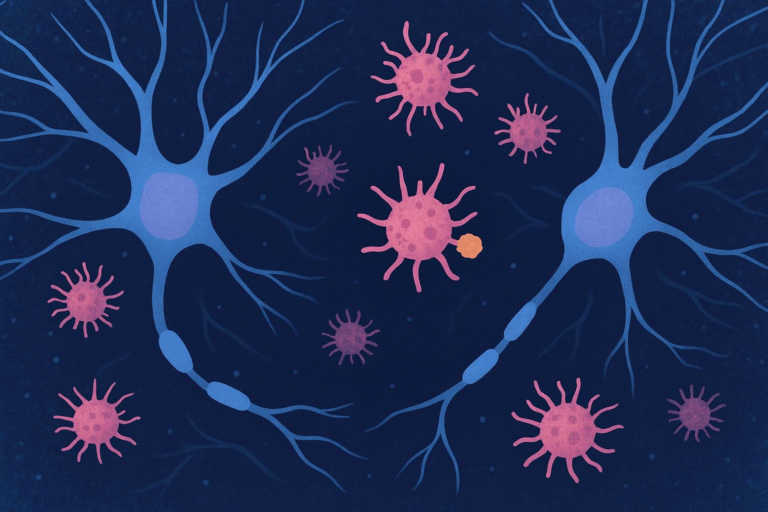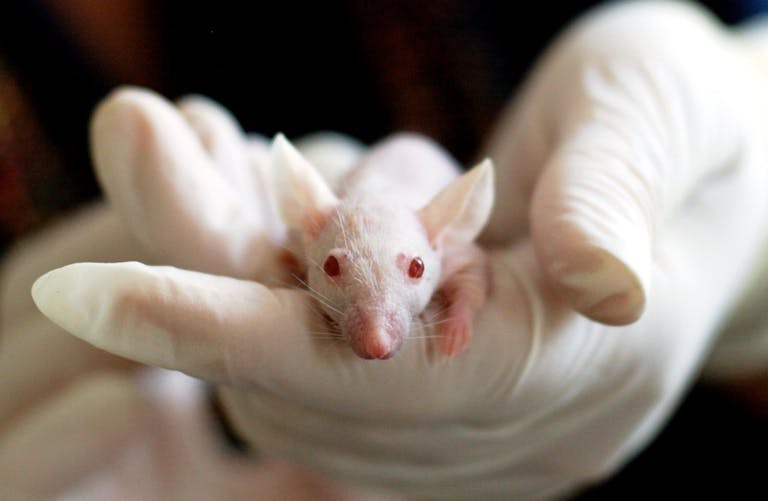High-Fiber Diet Shows Surprising Benefits in Alzheimer’s Research

A new study published in Cell Reports has uncovered fascinating details about how the gut and brain communicate in the context of Alzheimer’s disease (AD).
Researchers at the Buck Institute for Research on Aging, working with collaborators in Canada, revealed that specific immune cells in the gut can migrate to the brain, influencing disease symptoms. Even more interesting, a high-fiber diet helped restore gut balance and reduced frailty in mice engineered to develop Alzheimer’s. Let’s go through the details step by step.
The Study Setup
The work was performed using the 5XFAD mouse model. This is a commonly used genetic model in Alzheimer’s research because the mice are engineered to produce large amounts of amyloid-β, the sticky protein that forms plaques in human AD brains.
To investigate what was happening in the gut, the researchers applied single-cell RNA sequencing on colonic immune cells, supported by spectral-tuning flow cytometry for detailed immune profiling. This gave them a very clear view of the gut immune system and its changes under Alzheimer’s conditions.
What They Found in the Gut
One of the biggest findings was that CXCR4-positive antibody-secreting B cells were reduced in the colons of the Alzheimer’s mice. B cells are part of the adaptive immune system and are important for producing antibodies, including IgA antibodies, which help maintain balance with the gut microbiome. The loss of these cells meant the gut’s immune environment was significantly disrupted in AD.
Immune Cells on the Move
Things became even more intriguing when researchers looked beyond the gut. They discovered that these same CXCR4-positive B cells were showing up in the brain. Not only that, but gut-specific IgA-positive cells were found in the dura mater, which is the protective membrane covering the brain.
This was evidence of a gut-to-brain migration. The immune system in the gut was sending its troops across the so-called gut–brain axis, a two-way communication pathway between the intestines and the central nervous system.
The Role of Chemokines
The migration didn’t seem random. It was guided by a chemical signaling system involving chemokines. Specifically, the researchers focused on the CXCR4 receptor and its binding partner CXCL12.
They discovered that CXCL12 was highly upregulated in glial cells in the brains of Alzheimer’s mice. Glial cells are support and immune-related cells in the brain that often drive inflammation in neurodegenerative diseases. Higher levels of CXCL12 essentially created a “pull signal,” attracting gut B cells into the brain environment.
Analysis of human Alzheimer’s brain datasets also confirmed the presence of this migratory signature, suggesting the mechanism isn’t just a mouse-specific phenomenon.
Blocking the Pathway
In collaboration with researchers at the University Health Network in Toronto, the team went further. They performed blocking experiments using a small molecule drug to interfere with the CXCR4–CXCL12 axis. Although full details of the compound weren’t disclosed in press summaries, this strongly supported the idea of a long-range signaling mechanism pulling immune cells from gut to brain.
The High-Fiber Diet Experiment
The study didn’t stop at observing migration. The team also tested an intervention: feeding the AD mice inulin, a well-known prebiotic fiber. Inulin feeds beneficial gut bacteria and leads to the production of short-chain fatty acids and other metabolites that promote a healthier gut environment.
The results were striking:
- Gut IgA-positive cells expanded again.
- Peripheral regulatory T cells (Tregs), which help control inflammation, were replenished.
- The gut microbiome became more balanced (reduced dysbiosis).
- Levels of circulating microbial metabolites improved.
- Frailty in the mice was reduced, including a marked reduction in tremors—a symptom often observed in these Alzheimer’s models.
Importantly, the high-fiber diet did not consistently reduce amyloid plaques in the brain. But it improved overall healthspan. The researchers ran a 31-metric aging assay, and the mice receiving fiber performed much better. This suggests that quality of life and resilience against frailty can be boosted even when classic Alzheimer’s pathology remains unchanged.
Why This Matters
This study brings gut immune cells to the center of Alzheimer’s research. Traditionally, AD has been studied mostly through the lens of amyloid plaques, tau tangles, and neuroinflammation in the brain. This work shows that the gut’s immune system is deeply involved and that immune cells can literally travel from the gut to the brain.
It also highlights two possible therapeutic strategies:
- Modulating the immune-traffic pathway (e.g., targeting the CXCR4–CXCL12 axis).
- Dietary intervention with prebiotics like inulin, which support gut health and reduce systemic frailty.
Both approaches could complement existing strategies that focus on amyloid or tau.
Extra Background: Gut–Brain Axis and Alzheimer’s
To put these results in perspective, here’s some additional context:
- The gut–brain axis is a bi-directional communication system involving the nervous system, immune system, and microbial metabolites. Research has already linked gut microbiome imbalances to conditions like Parkinson’s disease, multiple sclerosis, and depression. This study extends that concept more firmly into Alzheimer’s research.
- Immune cells in the gut: The gut harbors the largest immune cell population in the body. Many of these cells, including B cells and T cells, are trained to keep peace with the trillions of microbes living in the intestines. A disruption here can ripple outward to the rest of the body.
- Inulin and prebiotics: Inulin is a type of soluble fiber found in foods like chicory root, garlic, onions, and asparagus. In the gut, it’s fermented by beneficial bacteria to produce short-chain fatty acids such as butyrate, acetate, and propionate. These metabolites improve gut barrier integrity, lower inflammation, and even influence brain health indirectly.
- Frailty and healthspan: In aging research, frailty is a measurable decline in resilience, involving tremors, weakness, weight loss, and other functional deficits. Improving frailty in Alzheimer’s models is meaningful because many patients struggle with overall physical health in addition to cognitive decline.
Researchers and Funding
The study was led by Priya Makhijani, PhD, with senior leadership from Daniel A. Winer, MD (an immunologist) and Julie K. Andersen, PhD (a neuroscientist). The research team was multidisciplinary, involving immunology, neuroscience, and microbiome expertise, as well as international collaboration.
Funding came from multiple NIH grants, including 3RF1 AG062280-01S1, NIA T32 AG000266, AG066591, and PO1AG06659. A conflict-of-interest disclosure noted that Daniel Winer is co-founder of Proprion Inc., a company that studies gut immune and metabolite-based interventions for aging and related diseases.
The Bigger Picture
This study raises some important questions for the future:
- Do these gut immune changes drive disease progression, or are they a response to brain inflammation?
- Could specific bacteria in the gut be responsible for triggering harmful immune responses?
- Would early intervention with prebiotics or chemokine blockers alter the course of disease more effectively than late treatment?
While many of these answers remain open, the work provides a new foundation for exploring Alzheimer’s not only as a brain disease but also as a condition deeply connected to gut immunity and diet.





